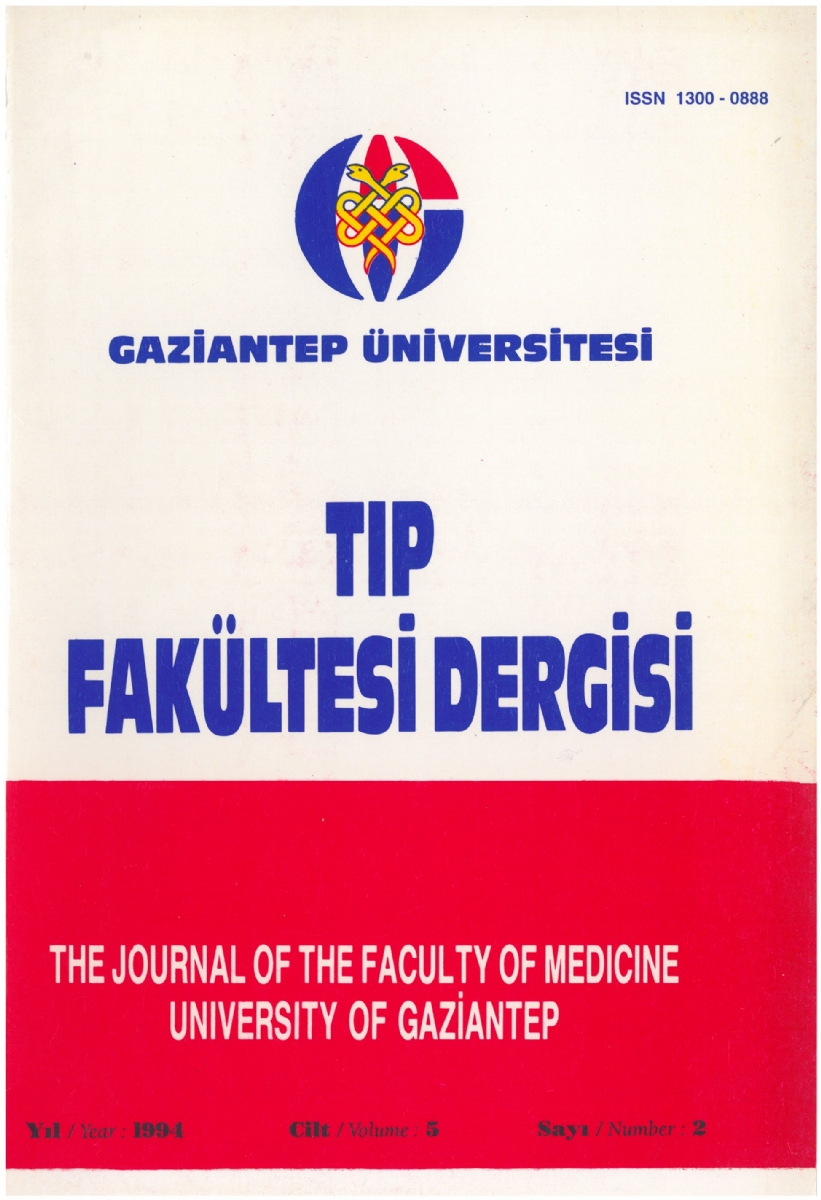The Investigation of Relation Between Pyuria and Bacteriuria in Symptomatic and Asymptomatic Urinary Tract Infections of Women
DOI:
https://doi.org/10.58600/eurjther.1994-5-2-1052-archKeywords:
Urinary Tract Infection, Pyuria, BacteriuriaAbstract
Greatly questionable, clacification of the diagnosis with the results of commonly used laboratory tests has great importance. in this study, relation between pyuria and bacteriuria was investigated. Pyuria was evaluated by white cell count and leukocyte esterase test in urine sedimen (Multistik 10 SG). Bacteriuria was detected in 153(51.94 %) of 298 urine specimens. In urine sediment of culture-positive specimens, pyuria was detected by white cell count in 33.3 % of these and by leukocyte esterase test in 34.6 % of these, the percentages were 22. 7 % and 12.4 % for culture--negative specimens, respectively. The correlation between bacteriuria and pyuria, especially for the specimens of symptomatic patients, was found to be high. Because of we couldn't find any statistical significance between white celi count and leucocyte esterase test, we think that both of the test can be used to determine the pyuria. However, for the diagnosis of urinary tract infection, it would be a proper management culturing the specimen, while evaluating the urine for pyuria.
Metrics
References
Wathne B., Hovelius B., Manih P.:Causes of frequency and dysuria in women. Scand Infect Dis. 19:223, 1987.
Ünal S.:Üriner Sistem İnfeksiyonlan. Antibiyotik Bülteni.3(1):10, 1993.
Gür D.:Üriner Sistem İnfeksiyonlannda Mikrobiyolojik Tanı. Antibiyotik Bülteni. 3(1):3, 1993.
Roberts AP., Robinson RE., Bearol RW.:Some factors affecting bacterial colony counts in urinary infection. Br.Med.J. 1:400, 1967.
Sonnenwith AC.:Collection and culture of specimens and guides for bacterial identification. In:Gradwohl's Oinical Laboratory Methods and Diagnosis, (8 th ed). Sonnenwith AC, Jarett L(eds). St Louis, The CV Mosby Company, 1980.p:1554.
Washington JA.:Oinician and the microbiology laboratory. Bacteria, fungi and parasites. In:Principles and Practies of Infectious Diseases. Mandell, Douglas, Bennett(eds). New York, Churchill-Livingstone, 1990.p:168.
Murray PR., Smith TB., Mc IGnney TC.:Oinical evaluation of three urine screening tests.J.Oin.Microbiol.25:467, 1987.
Pfaller MA., Baum CA., Niles AC., Murray PR.:Oinical laboratory evaluation of an urine screening device. J.Oin.Microbiol.18:674, 1983.
Wear JB.:Correlation of pyuria, stained urine smear, urine culture and the uroscreen test.J.Urol.96:808, 1966.
Duerdan BJ., Mayes A.:Comparison of aboratory methods in the diagnosis of urinary tract infection. J.Oin.Pathol.29:286, 1976.
Pfaller MA., Koontz FP.:l..aboratory evaluation of leukocyte esterase and nitrite tests for the detection of bacteriuria. J.Oin.Microbiol.21:840, 1985.
Thysell H.:Evaluation of chemical and microscopical methods for mass detection of bacteriuria.Acta.Med.Scand.185:393, 1969.
Boscia JA., Abrutyn E., Levision M., et al.:Pyuria and asymptomatic bacteriuria in elderly ambulatory women.Ann.İnter.Med.110:404, 1989.
Latham RH., Wong ES., Larson A., et al.:Laboratory diagnosis of urinary tract infection in ambulatory women.JAMA, 254(23):193, 1969.
Komaroff AL.:Urinalysis and urine culture in women with dysuria.Ann.İnter.Med.104:212, 1986.
Mc Geachiae J., Kennedy AC.:Simplified quantitative methods for bacteriuria and pyuria J.Oin.Pathol.16:32, 1963.
Stamm WE., Wagner KF., Amsel R., et al.:Causes .of the acute urethral syndrome in women. N.Engl.J.Med.303:409, 1980.
Stamm WE., Counts GW., Running KR., et al.:Diagnosis of coliform infection in acutely dysuric women.N.Engl.J.Med.307:463, 1982.
Mabeck CE.:Studies in urinary tract infections. Acta.Med.Scand.186:193, 1969.
Bilgehan H.:Bakteri sayımı ve sonuçlanrun değerlendirilmesi. Klinik Mikrobiyolojik Tanı. Bilgehan H(ed). Bornova-İzmir.Fakülteler Kitabevi. 1992.s:344.
Dalton MT., Comeau S., Rainnie B., et al.:A comparison of the API uriscreen with the vitek urine identification-3 and the leukocyte esterase or nitrite strip as a screening test for bacteriuria. Diagn Microbiol Infect Dis.16:93, 1993.
Pezzio MT., Wetkowski MA., Peterson EM., et al.:Detection of bacteriuria and pyuria within two minutes.J.Oin.Microbiol.21(4):578, 1985.
Uygur MC., Şahin A., Özen HA.:Üriner enfeksiyonlar:Konakçı savunma mekanizmalan, predispozan faktörler, lokalizasyon, laboratuvar. Cerr.Tıp.Bül.1(2):93, 1992.
Özsüt H., Eraksoy H., Dilmener M., et al.:Pyuri saptamasında kullanılan testlerin üriner sistem infeksiyonu tanısındaki değerlerinin karşılaşbnlması. 7. Türk Klinik Mikrobiyoloji ve İnfeksiyon Hastalıklan Kongresi. Ürgüp 11-15 Eylül 1994, 239.
Karabiber N., Balk M.:Bakteriüri, pyüri ve nitrit deneyi sonuçlan arasındaki ilişkinin araşbnlması. İnfeksiyon Dergisi. 5(2):87 .1991.
Downloads
Published
How to Cite
Issue
Section
License
Copyright (c) 2023 European Journal of Therapeutics

This work is licensed under a Creative Commons Attribution-NonCommercial 4.0 International License.
The content of this journal is licensed under a Creative Commons Attribution-NonCommercial 4.0 International License.


















